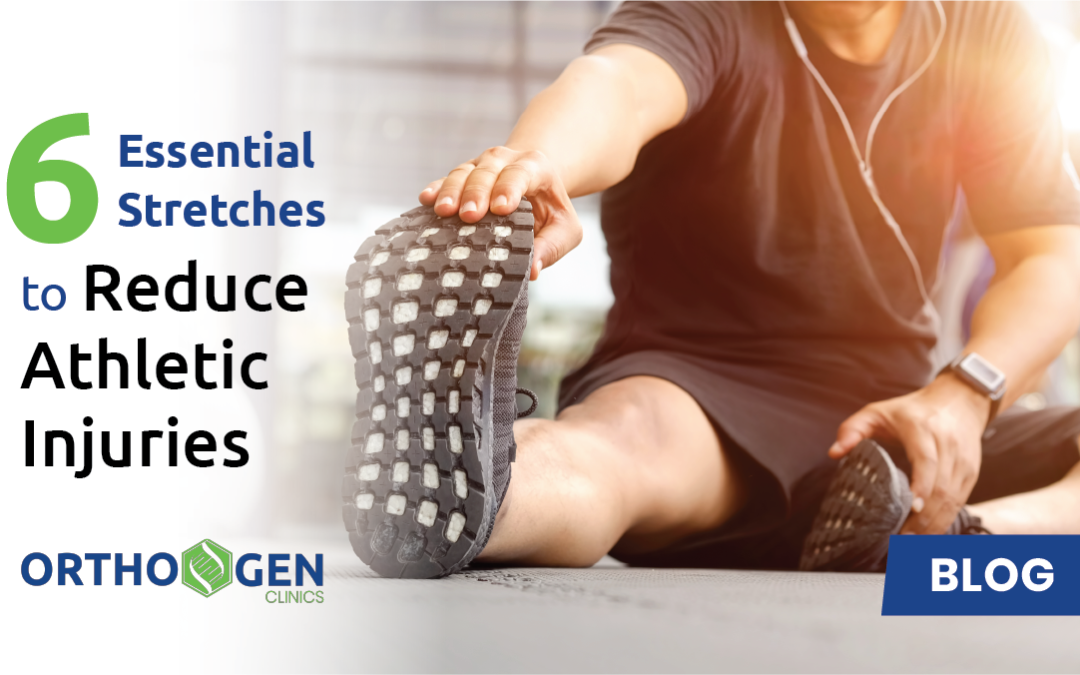Gearing up for the activity of the holidays and the start of the New Year inspires many of us to re-introduce workouts into our schedules, but if you’ve spent any time on the sidelines, getting back into the exercise game could be a risky endeavor. Not only is it easy to over-exert yourself when starting a new regime, but straining unconditioned muscles and other soft tissues can lead to athletic injuries that can put you right back on the bench. What are the six best exercises for preventing workout injuries?
Be Mindful of Muscles and Joints
Knowing how to prepare muscles for action can make mindful movement easier and safer. Muscles like to work in pairs, meaning that one muscle usually opposes the action of another. Think of your upper arm: when you bend your elbow and flex your biceps, the triceps on the back of the arm relaxes. This same thing happens in the legs and hips, so when warming up, it’s important to prepare both the front and back, and inner and outer muscles of the limbs and pelvis. Also, muscles create movement in the body by connecting across joints, like the thigh muscle crossing the knee to move the lower leg bone. Because of this, it’s important to prepare the muscles above and below your joints as well. Which stretches can help us avoid straining knees and prevent injuries?
Calves and Shins
Tight muscles below the knees can compromise correct posture and gait, so walking and running could easily irritate joints from the ground up.
Heel dips:
stand on the balls of the feet at the edge of a step. Maintain straight legs and an upright posture, and allow the heels to dip below the level of the stair, and hold. Repeat twice more, with toes and then heels turned outward.
Shin stretches:
stand with your weight on one foot, and extend the opposite leg behind you with the tiptoes on the ground. Gently press the back ankle joint forward while relaxing the shin. Repeat on the other side.
Quads and Hamstrings
The muscles at the front and back of the thighs are some of the largest and most dense in the body, so if extreme, fast, or jerky movements are introduced without proper conditioning, it’s easy to experience strains and tears that can leave you uncomfortable and injured.
Knee sways:
rest on your back with knees bent and feet wider than hip distance apart. Slowly sway both knees over to the right, then left sides, getting closer to the floor each time. After 5-6 times on either side, hold both knees to one side, and press the top hip forward, lifting the seat on that side. Repeat on the other side.
Forward fold:
stand with heels aligned under knees. Fold at the hip crease with a flat back, and bring forearms to rest above the knee on the thigh bone. Continue to fold, and allow the upper body and crown to round forward and relax. Keep bent knees, soften through the back of the thighs, and gently lift the seat for more length in the hamstrings.
Hips and Glutes
The muscles that cross the front of our hip joints “lift” the upper leg bone to help propel us forward, but if we spend a lot of time sitting, they can get tight and pull on the spine and hips, creating pain and limited mobility. Likewise, the gluteus muscles across the back of the seat help stabilize the sacrum and hips, but can pull on the hip and leg bones if they aren’t soft and well-conditioned.
Low lunge:
kneel on a blanket or pad and step one foot forward, align the front knee over the ankle. Place the hands at the hips and lift the chest upright, and then gently press the front of the hips forward, relaxing through the front of the lowered thigh. Repeat on the other side.
Glute stretch:
begin on hands and knees, and cross one knee behind the other. Kick the heels apart to make space, and fold at the hip crease as you walk the hands back, sinking the seat toward the floor. Keep the spine long and focus on softening across the seat. Walk the hands forward, repeat on the other side.
Maintain Mobility
Maintaining healthy and strong bodies requires that we regularly care for them through mindful movement, but it can be hard to get active with limited mobility and compromised comfort. At OrthoGen clinics, we take care of the biggest hindrance to your youthful and active lifestyle—pain. Through a wide range of non-surgical options, we can get you back to doing the things you love. Join us today to learn more about the conditions we treat. You have nothing to lose but the pain!

